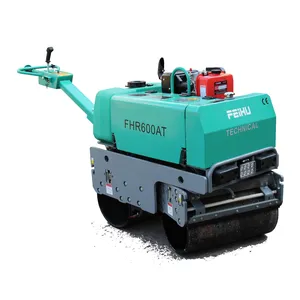

CE 600KG Double Drum Vibrating Foam Roller For Sale Free Spare Parts South Korea Philippines Nigeria United States Algeria KAMA

Double Drum Road Mine Roller Walk Behind Mini 500Kg Single Drum Hand Asphalt Small Tandem Rollers Compactor









Asphalt hand rollers are essential tools in the road construction and maintenance industry. These compact units are designed for pressing and flattening asphalt, ensuring a smooth and even surface. Ideal for small-scale projects or tight spaces where larger rollers cannot operate, asphalt hand rollers offer versatility and precision.
There are various types of asphalt hand rollers, each suited to specific tasks. From single-drum to double-drum, the choice depends on the project's requirements. These rollers are not limited to road work; they are also used for compacting soil and other materials in landscaping and construction.
Asphalt hand rollers are built with durability in mind. The drums are typically made from robust materials like steel, designed to withstand the rigors of construction work. Many models feature ergonomic handles and vibration dampening systems to reduce operator fatigue, enhancing productivity on the job site.
The primary advantage of an asphalt hand roller is its ability to access areas that larger machinery cannot. This makes it an invaluable asset for patching potholes, working on pathways, or compacting asphalt in corners. Additionally, their relatively simple design means they are often more affordable and easier to maintain than their larger counterparts.
Selecting the right asphalt hand roller involves considering the project size, the material to be compacted, and the desired finish. While some rollers are better for fine work and finishing touches, others are designed for the initial stages of compaction. It's crucial to match the roller to the task for optimal results.
Proper maintenance is key to extending the life of an asphalt hand roller. Regular checks and cleaning after use can prevent damage and wear. It's important to follow the manufacturer's guidelines for servicing to ensure the roller remains in good working condition.